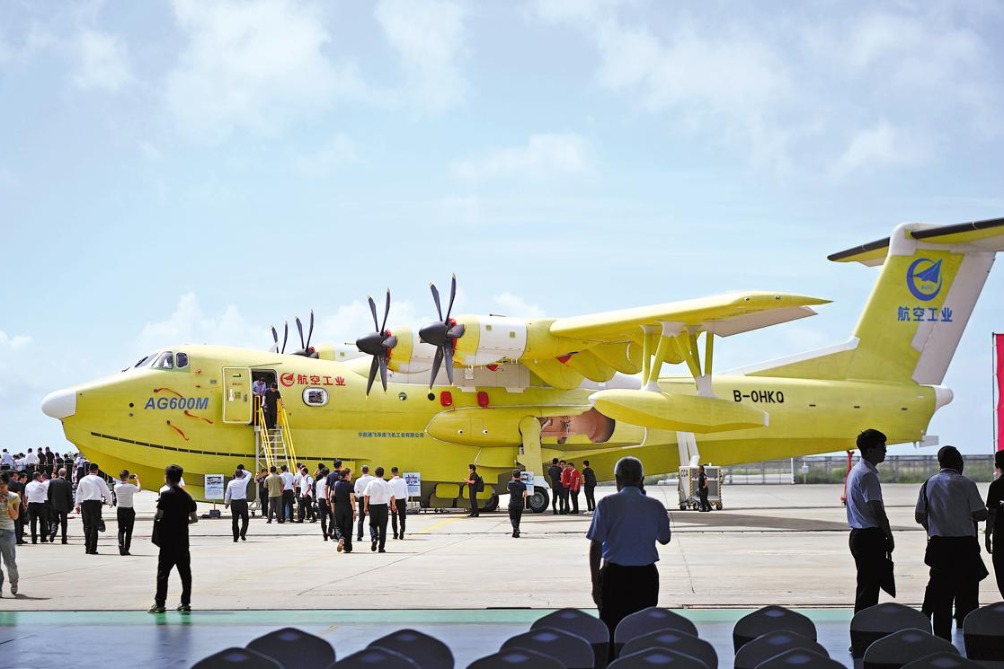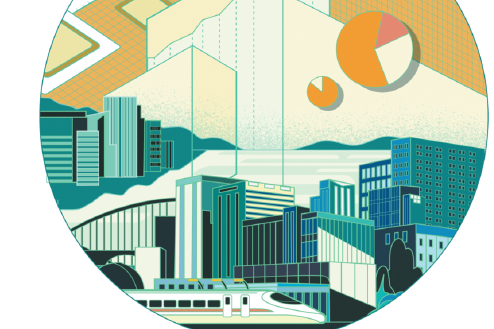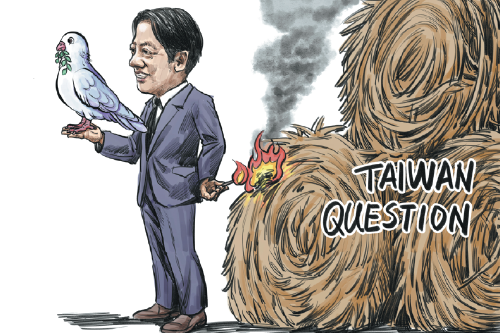Global South's development in a new era
In today's changed global landscape, state capacity, institutional system, socioeconomic policies and peace are a must for the prosperity of the developing world


Since 2001, the world has entered a long period of international volatility and geopolitical upheaval. The world has experienced the Sept 11 terrorist attacks, the war in Iraq, the Russia-Georgia War, the "Arab Spring" and its aftermath, the Crimean crisis, Brexit, the Syrian crisis, the Ukraine crisis, the Israel-Hamas war, and of course, the US-China rivalry. With a second Donald Trump presidency in the United States, even the transatlantic system is in trouble.
Even if we believe that economic development has been mostly driven by domestic factors, the international system seriously constrains states' actions, including their pursuit of economic development. This is perhaps even more so for developing countries, roughly the Global South. Thus, when international volatility increases, the Global South faces even more challenges in sustaining economic development. So, what are the implications for economic development in the Global South? To understand these challenges, we first need to grasp that the international political economy now has an entirely new landscape, largely with the following three main characteristics.
First, the Global South now has more self-awareness and hence more active agencies. For decades after their independence, most countries in the Global South had been saddled with weak state capacities. Thus, for many countries in the Global South, statebuilding has been their primary task in the decades immediately after their independence. As a result of these efforts, most Global South countries have more state capacity and sound institutions for taking initiatives.
Moreover, the collapse of the Washington Consensus and the erosion of the US-led international order have taught the Global South the hard lesson that they cannot simply follow what the West tells them to do, whether for state-building, democratization or economic development. Instead, countries in the Global South have to learn, digest and integrate key lessons from their fellow counterparts and then take proper initiatives. In short, agencies by the Global South are now not only absolutely necessary but also immanently possible.
At the same time, the overall success of East Asia (including both Northeast Asia and Southeast Asia) in the East Asian Miracle has shown that there are pathways toward economic prosperity other than what has been preached by neoclassical economics and neoinstitutionalism economics (those preached by Douglass North and his followers). If East Asia can do it, other Global South countries and regions can do it too. This realization also encourages more agencies from other countries in the Global South.
Second, the new technologies today bring entirely new dynamics to economic development. While technology has powered human progress throughout history, and more so since 1500 AD, most emerging technologies in the past have their impact limited to a few industries or sectors. For example, railways greatly sped up transportation, production, and the integration of markets while telegraphs facilitated communication, navigation, and military coordination.
By comparison, today's new technologies, most prominently mobile communication, satellite imaging, artificial intelligence, automation and drones, can potentially empower all sectors. For instance, satellite imaging and drones can greatly improve traditional agriculture, while farmers can now complete their transactions instantly with mobile devices. Likewise, AI-empowered automation and robots can greatly increase productivity not only in high-tech manufacturing but also in traditional manufacturing. In short, these new technologies are omni-empowering. While it remains true that only a few major developing countries, such as Brazil, China, India and Indonesia, can innovate at the technological frontier because innovations require substantial and steady investment in physical infrastructure and human capital, most countries in the Global South can adopt these powerful technologies at a relatively small cost, aided by information technologies.
Finally, the looming US-China rivalry, which may well last more than one or two decades, also brings a new dimension to the new landscape of the international political economy.
Throughout the post-1500 AD modern history, geopolitical rivalry has always shaped the landscape of the international political economy. Yet, the US-China rivalry distinguishes itself from all previous rivalries in at least three aspects. To begin with, a leading major economy now resides in the Global South, for the first time. Before World War II, all major economies came from the West. After World War II, both (West) Germany and Japan became US allies and part of the West. While the Soviet Union was a major military and political power, its economy never reached half that of the US.Moreover, the Soviet Union did not trade with the Global South that much.
By comparison, China, clearly part of the Global South, is now a major trading partner with many countries in the Global South. In fact, since 2022, China's total trade volume with the Global South has overtaken its total trade volume with the Global North, even if some of the trade with the Global South eventually targets the Global North. Thus, China is equally integrated with the Global South and with the West. In fact, one can plausibly argue that part of the Global South is now more integrated with China than with the West.
Equally important, China is now a leading technological power. In many technological areas, China is now on par or even ahead of the West. This means that for the Global South, China can be an alternative source of capital, technology and expertise in development, besides the West.
So, what are the implications for economic development in the Global South? Two key lessons stand out. First and foremost, no country can achieve economic development if its leadership does not want to. Yet, even with a dedicated and competent leadership, jump-starting and sustaining development is not an easy task. In fact, one of the most striking and depressing facts in the past half century has been that few countries have been able to achieve and sustain 4 percent growth rate of GDP per capita for more than two decades. So, what are the requisites for sustaining development? The answer lies in what I call the "New Development Triangle": state capacity, institutional system and socioeconomic policies (including industrial policies). In today's world, quite a few developing countries may lack one or even all three pillars of the triangle.
Second, peace is always good for economic development while war is always bad. Hence, countries within a region should try to avoid conflict against each other. For this, some level of regionalism may be necessary: regionalism is a key anchor for regional stability. Regions such as the Middle East and South Asia in which major countries cannot live peacefully with each other thus suffer in their pursuit of economic development.
As the late Chinese leader Deng Xiaoping put it, peace and development should and do go together.

The author is a distinguished professor at Fudan University, vicepresident of the International Studies Association and director of the Center for Complex Decision Analysis at Fudan University. The author contributed this article to China Watch, a think tank powered by China Daily.
Contact the editor at editor@chinawatch.cn.


































